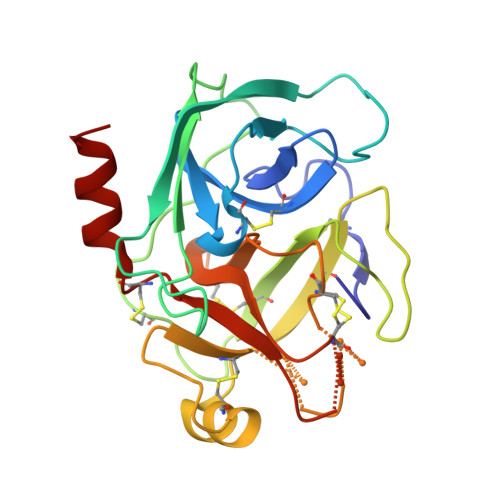Atomic Resolution Structure of Trypsin Provide Insight Into Structural Radiation Damage
Leiros, H.-K.S., Mcsweeney, S.M., Smalas, A.O.(2001) Acta Crystallogr D Biol Crystallogr 57: 488
- PubMed: 11264577
- DOI: https://doi.org/10.1107/s0907444901000646
- Primary Citation of Related Structures:
1HJ8, 1HJ9 - PubMed Abstract:
Radiation damage is an inherent problem in protein X-ray crystallography and the process has recently been shown to be highly specific, exhibiting features such as cleavage of disulfide bonds, decarboxylation of acidic residues, increase in atomic B factors and increase in unit-cell volume. Reported here are two trypsin structures at atomic resolution (1.00 and 0.95 A), the data for which were collected at a third-generation synchrotron (ESRF) at two different beamlines. Both trypsin structures exhibit broken disulfide bonds; in particular, the bond from Cys191 to Cys220 is very sensitive to synchrotron radiation. The data set collected at the most intense beamline (ID14-EH4) shows increased structural radiation damage in terms of lower occupancies for cysteine residues, more breakage in the six disulfide bonds and more alternate conformations. It appears that high intensity and not only the total X-ray dose is most harmful to protein crystals.
Organizational Affiliation:
Protein Crystallography Group, Department of Chemistry, Faculty of Science, University of Tromsø, N-9037 Tromsø, Norway.


















